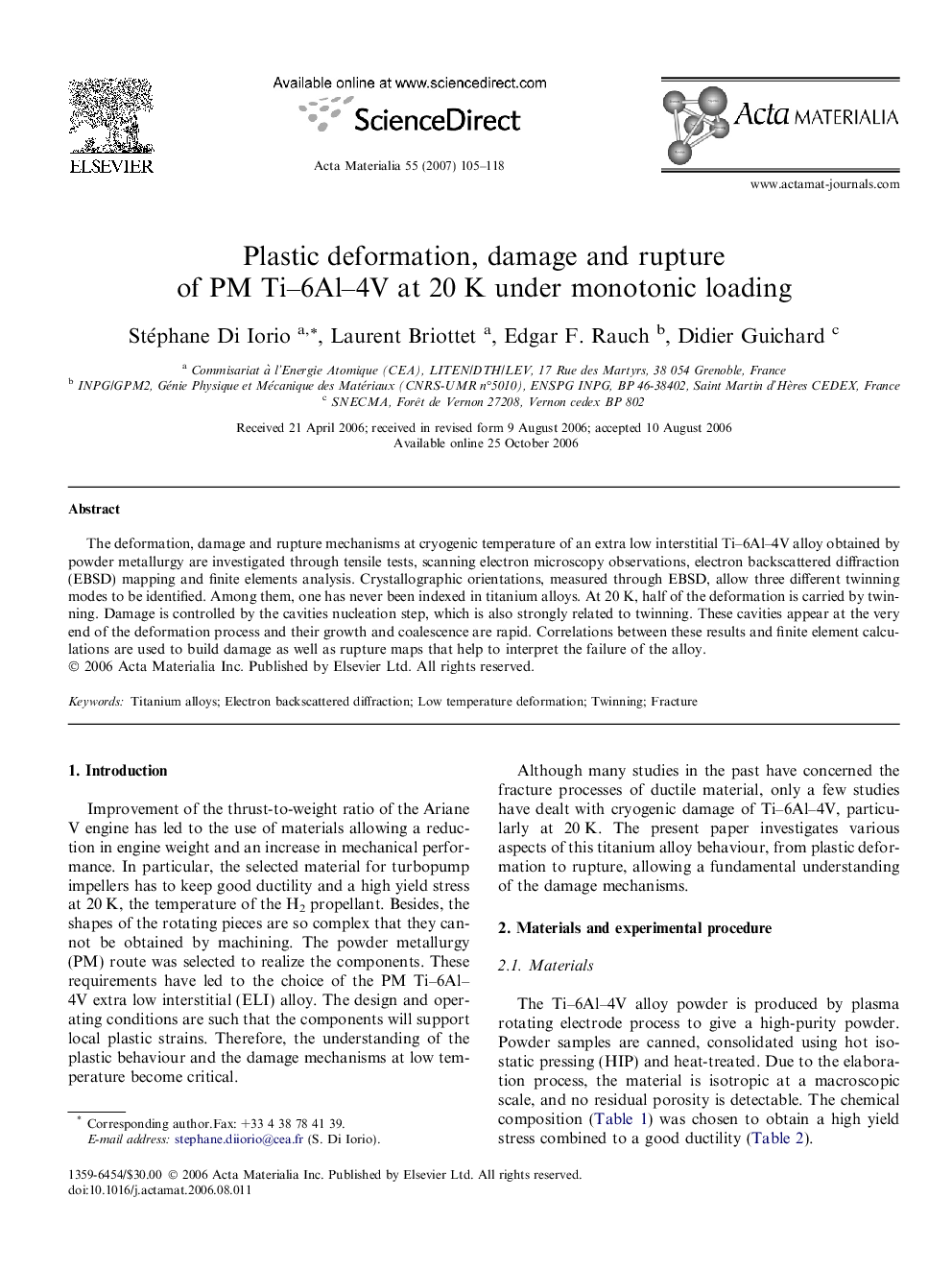| Article ID | Journal | Published Year | Pages | File Type |
|---|---|---|---|---|
| 1449893 | Acta Materialia | 2007 | 14 Pages |
The deformation, damage and rupture mechanisms at cryogenic temperature of an extra low interstitial Ti–6Al–4V alloy obtained by powder metallurgy are investigated through tensile tests, scanning electron microscopy observations, electron backscattered diffraction (EBSD) mapping and finite elements analysis. Crystallographic orientations, measured through EBSD, allow three different twinning modes to be identified. Among them, one has never been indexed in titanium alloys. At 20 K, half of the deformation is carried by twinning. Damage is controlled by the cavities nucleation step, which is also strongly related to twinning. These cavities appear at the very end of the deformation process and their growth and coalescence are rapid. Correlations between these results and finite element calculations are used to build damage as well as rupture maps that help to interpret the failure of the alloy.
